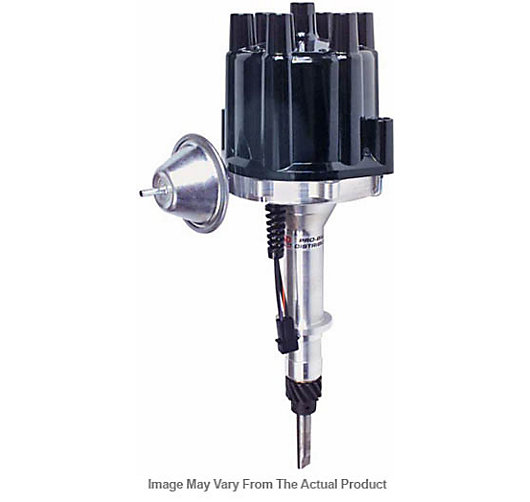Blog

DO YOU KNOW THIS PART OF YOUR CAR?
A distributor is a device in the ignition system of an internal combustion engine that routes high voltage from the ignition coil to the spark plugs in the correct firing order. The first reliable battery operated ignition was developed by Dayton Engineering Laboratories Co. (Delco) and introduced in the 1910 Cadillac. This ignition was developed by Charles Kettering and was considered a wonder in its day. Atwater Kent invented his Unisparker ignition system about this time in competition with the Delco system.

A distributor consists of a rotating arm or rotor inside the distributor cap, on top of the distributor shaft, but insulated from it and the body of the vehicle (ground). The distributor shaft is driven by a gear on the camshaft on most overhead valve engines, and attached directly to a camshaft on most overhead cam engines. (The distributor shaft may also drive the oil pump.) The metal part of the rotor contacts the high voltage cable from the ignition coil via a spring-loaded carbon brush on the underside of the distributor cap. The metal part of the rotor arm passes close to (but does not touch) the output contacts which connect via high tension leads to the spark plug of each cylinder. As the rotor spins within the distributor, electric current is able to jump the small gaps created between the rotor arm and the contacts due to the high voltage created by the ignition coil.
The distributor shaft has a cam that operates the contact breaker. Opening the points causes a high induction voltage in the system's ignition coil.
The distributor also houses the centrifugal advance unit: a set of hinged weights attached to the distributor shaft, that cause the breaker points mounting plate to slightly rotate and advance the spark timing with higher engine rpm. In addition, the distributor has a vacuum advance unit that advances the timing even further as a function of the vacuum in the inlet manifold. Usually there is also a capacitor attached to the distributor. The capacitor is connected parallel to the breaker points, to suppress sparking to prevent excessive wear of the points.
Around the 1970s[citation needed] the primary breaker points were largely replaced with a Hall effect sensor or optical sensor. As this is a non-contacting device and the ignition coil is controlled by solid state electronics, a great amount of maintenance in point adjustment and replacement was eliminated. This also eliminates any problem with breaker follower or cam wear, and by eliminating a side load it extends distributor shaft bearing life. The remaining secondary (high voltage) circuit stayed essentially the same, using an ignition coil and a rotary distributor.
Most distributors used on electronically fuel injected engines lack vacuum and centrifugal advance units. On such distributors, the timing advance is controlled electronically by the engine computer. This allows more accurate control of ignition timing, as well as the ability to alter timing based on factors other than engine speed and manifold vacuum (such as engine temperature). Additionally, eliminating vacuum and centrifugal advance results in a simpler and more reliable distributor.
so get yours today and click...http://carpartsnigeria.com/productdesc/413 order now! and you enjoy Carpartsnigeria 5% discount
Posted on August 2016,08 // Author: Admin